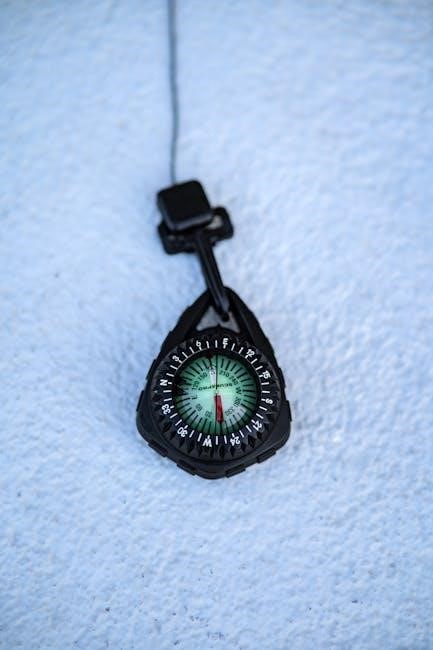pathfinder witch guide
- by chaya

The Pathfinder Witch is a mystical spellcaster who derives power from an enigmatic patron, utilizing a familiar, arcane spellcasting, and hexes to manipulate the world around them, making them a versatile and intriguing class in both combat and roleplay.

Witch Class Features
The Witch class features include spellcasting, a familiar, and hexes, with abilities tied to a chosen patron, offering versatile magic and combat options.
2.1. Spellcasting
The Pathfinder Witch is an Intelligence-based, prepared arcane spellcaster, deriving their magical abilities from a mysterious patron. Unlike wizards, witches rely on their familiar rather than a spellbook to learn and prepare spells. Their spellcasting is tied to their Intelligence score, determining the strength and variety of their magical abilities. Witches gain access to a diverse spell list, including enchantments, divinations, and transmutations, with their available spells influenced by their chosen patron. They prepare their spells daily, using a spell slot system similar to other arcane casters. This flexibility allows witches to adapt to various roles, from support to offense, making them highly versatile in both combat and exploration scenarios. Their spellcasting abilities are central to their class identity and effectiveness.
2.2. Familiar
The familiar is a cornerstone of the Pathfinder Witch class, serving as a loyal companion and magical catalyst. At 1st level, a witch forms a close bond with a familiar, a small creature that aids her in casting spells and navigating the world. Unlike a wizard’s spellbook, the familiar acts as the witch’s primary magical focus, granting her access to her spells. The familiar can deliver touch spells, share the witch’s skill ranks, and even use her spells in certain circumstances. This symbiotic relationship enhances the witch’s versatility and survivability. As the witch gains levels, the familiar grows in power, unlocking new abilities and becoming an invaluable ally. The familiar’s presence is both a tactical asset and a narrative cornerstone for the witch’s identity.
2.3. Hexes
Hexes are a defining feature of the Pathfinder Witch class, offering a wide range of magical abilities that can be used to customize the character. These abilities are gained at every even level, starting at 1st level, and they provide a variety of offensive, defensive, and utility options. Hexes allow the witch to weaken enemies, protect allies, or manipulate the environment, making them a versatile tool in both combat and exploration. Unlike spells, hexes are typically limited in their use per day but offer unique effects that can enhance the witch’s tactical options. By choosing the right hexes, a witch can adapt to different playstyles, making them a core element of the class’s identity and gameplay. Hexes add depth and flexibility to the witch’s magical arsenal.
2.4. Patron
The patron is a central element of the Pathfinder Witch class, representing the mysterious force that grants the witch her magical powers. This enigmatic being could be a deity, a powerful spirit, or an otherworldly entity, and it influences the witch’s abilities and theme. At 1st level, the witch selects a patron, such as the “Owl” for wisdom or the “Hag” for dark magic. Each patron offers unique abilities and enhances the witch’s spellcasting in specific ways. The choice of patron significantly impacts gameplay, providing access to specific hexes, spells, and class features. This relationship adds depth to the witch’s identity, blending roleplay and mechanics seamlessly. The patron’s influence evolves as the witch gains levels, unlocking powerful abilities that resonate with the chosen theme.
2.5. Witch’s Spell List
The Witch’s Spell List is a diverse collection of arcane spells, organized by level and drawn from various magical traditions. Unlike the wizard, the witch’s spell list is influenced by her patron, granting access to unique and thematic spells. The list includes a wide range of options, from healing and divination to enchantment and illusion, allowing the witch to adapt to different situations. While the witch’s spell list is smaller than the wizard’s, it is highly versatile, with spells that complement her hexes and familiar abilities. The spells are divided into cantrips and spell levels, with higher-level spells offering greater power and complexity. This list is a key part of the witch’s identity, reflecting her connection to her patron and her role as a master of arcane magic.

Choosing the Right Patron
Choosing the right patron is one of the most crucial decisions for a Witch, as it defines her source of power and shapes her abilities. Each patron offers a unique set of spells, hexes, and thematic abilities, aligning with different playstyles and character backgrounds. For example, the Trickster patron emphasizes deception and illusions, while the Hexblade focuses on curses and dark magic. The Archfey patron, on the other hand, grants access to nature-based spells and charms. Players should consider their character’s backstory, desired role in the party, and combat preferences when selecting a patron. While some patrons excel in direct combat, others are better suited for support or utility roles. The choice of patron ultimately determines the Witch’s identity and gameplay experience.
Hexes in Detail
Hexes are spell-like abilities that grant the Witch unique powers, offering versatility in both combat and roleplay. They are gained at every even level and at first level, providing offensive, defensive, or utility effects that weaken foes or aid allies, making them a defining feature of the class.
4.1. Offensive Hexes
Offensive hexes empower the Witch to debilitate enemies, delivering debilitating effects that hinder foes in combat. These hexes often impose penalties, cause direct damage, or apply harmful conditions. For instance, the Evil Eye hex curses a target, causing them to suffer from misfortune, while Cackle can unsettle enemies, undermining their resolve. Other offensive hexes, like Hex Gun, allow the Witch to channel hexes through a firearm, combining ranged attacks with magical effects. These abilities make the Witch a formidable opponent, capable of weakening enemies while maintaining a safe distance. By leveraging offensive hexes, the Witch can control the battlefield and disrupt enemy strategies, making them a valuable asset to any party. Hexes like Shrivel or Withering further exemplify the class’s ability to afflict targets with lasting penalties, enhancing their combat versatility.
4.2. Defensive Hexes
Defensive hexes provide the Witch with tools to protect themselves and their allies, enhancing survivability in demanding situations. Hexes like Protective Luck grant bonuses to AC, while Charm Resistance safeguards against mind-affecting spells. Healing Hex allows the Witch to restore health, and Fortune can reroll failed saving throws. These abilities make the Witch resilient and capable of mitigating threats. By using defensive hexes, the Witch can ensure their longevity in combat and support their party effectively. Such hexes are invaluable for maintaining defensive stability, making the Witch a reliable and strategic asset in any adventuring group. They complement the class’s offensive capabilities, ensuring a balanced approach to both dealing and withstanding damage in encounters.
4.3. Utility Hexes
Utility hexes offer the Witch versatile tools to solve problems, manipulate environments, and enhance allies outside of direct combat. Hexes like Healing Hex provide restorative benefits, while Modify Memory allows subtle alterations to perceptions. Slumber can incapacitate foes without violence, and Ward creates protective barriers. These abilities make the Witch adaptable, capable of addressing various challenges creatively. Utility hexes often serve as non-combat solutions, making the Witch a valuable asset in exploration and social scenarios. They add depth to the class, emphasizing versatility and strategic thinking, ensuring the Witch remains effective in diverse situations, from diplomacy to exploration. This category underscores the class’s flexibility and resourcefulness.

Witch Feats and Abilities
Witch feats and abilities enhance the class’s magical prowess and versatility. Key feats like Spell Focus and Greater Spell Focus improve spellcasting effectiveness, while Toughness boosts survivability. The Spirit Talker feat allows communication with spirits, expanding utility. Feats such as Skill Focus enhance proficiency in specific skills, making the Witch more adaptable. Abilities like Hex Master grant advanced control over hexes, and Major Hex unlocks powerful versions of favorite hexes. These options enable players to tailor their Witch to fit various playstyles, emphasizing either combat, exploration, or roleplay. By choosing the right feats and abilities, a Witch can become a formidable caster, blending magic and cunning seamlessly. This customization ensures the Witch remains a dynamic and engaging class in any campaign.

Witch Archetypes
Witch archetypes offer diverse playstyles, transforming the class into unique roles. The Veneficus excels at poison and darkness magic, while the Winter Witch commands icy powers and cold-based spells. The Ley Line Guardian taps into the power of ley lines to enhance spellcasting, making them formidable in specific environments. Archetypes like the Gravewalker blend necromancy with hexes, creating a dark, versatile caster. Each archetype provides distinct abilities, such as enhanced elemental control or improved familiar powers, allowing players to craft a Witch tailored to their preferred theme or campaign setting. By choosing an archetype, players can deepen their character’s lore and mechanical effectiveness, ensuring the Witch remains a compelling choice across various adventures and strategies.
Witch Magic Items
Magic items are crucial for enhancing a Witch’s abilities, offering ways to amplify spellcasting, hexes, and familiar powers. The Cauldron hex allows brewing potions, making items like Sample builds for the Witch class offer players a roadmap to creating effective and thematic characters. The Winter Witch build focuses on cold-themed spells and hexes, leveraging the Cauldron hex for icy potions. The Ley Line Guardian build emphasizes defensive magic and territorial control, using the Witch’s Bottle to store spells. The Stigmatized Witch build opts for a more offensive approach, combining debilitating hexes with damage-dealing spells. These builds highlight how the Witch’s abilities can be tailored to specific playstyles. By choosing the right patron, hexes, and feats, players can craft a Witch that excels in combat, support, or exploration. These examples demonstrate the class’s flexibility and the depth of its customization options. Advanced Witch strategies focus on mastering hexes, spellcasting, and familiar abilities to dominate encounters. Using hexes like Cauldron and Witch’s Bottle, players can create potions that grant allies powerful effects, such as teleportation or buffs. The familiar can be used for advanced scouting, leveraging abilities like Tremorsense to detect hidden enemies. Optimize patron abilities by tailoring spells and hexes to the patron’s theme, enhancing offensive or defensive capabilities. Combine hexes with spells for devastating synergies, such as using Baleful Polymorph to disable enemies while casting damage-dealing spells. Tactical positioning and resource management are key, ensuring the Witch remains a versatile and formidable force on the battlefield. By adapting strategies to the party’s needs, the Witch becomes an indispensable asset in any adventure. Multiclassing with the Witch offers unique opportunities to blend magical and martial prowess. Combining the Witch with classes like Sorcerer or Cleric enhances spellcasting abilities, while pairing with Rogue or Ranger adds stealth and precision. The Witch’s familiar and hexes complement classes like Bard or Druid, creating versatile support characters. Multiclass builds often focus on maximizing Intelligence for spellcasting while gaining combat or skill versatility. For example, a Witch/Rogue can use hexes to debilitate enemies before striking from the shadows, while a Witch/Cleric can heal and buffet allies. However, multiclassing requires careful planning to avoid compromising the Witch’s core abilities. Strategic multiclassing can unlock powerful synergies, making the Witch a dynamic and adaptable character in any party. The Witch excels in various adventure settings, bringing versatility through their magic and adaptability. In urban campaigns, their stealth and charm hexes can manipulate NPCs, while in divine-themed adventures, their patrons and healing spells shine. For high-fantasy quests, the Witch’s offensive and utility hexes provide combat and exploration tools. In horror campaigns, their ability to curse and manipulate reality creates eerie, thematic effects. The Witch’s bond with their familiar also adds depth to story-driven adventures, offering roleplay opportunities. Whether in a dark and gritty or light-hearted campaign, the Witch’s flexibility ensures they remain a valuable and intriguing party member, blending magic, mystery, and utility seamlessly into any narrative. For mastering the Witch class, several resources are essential. The Advanced Players Guide is a cornerstone, introducing the class and its core mechanics. Online guides like Owl’s Guide to Witches and Pathfinder Witch Deep Dive offer in-depth analyses of hexes, patrons, and spell selections. Community forums and platforms like Reddit and Paizo forums provide builds, strategies, and discussions from experienced players. Archetypes and feats can be explored in People of the River and other Player Companions. Additionally, video guides on platforms like YouTube, such as Pathfinder: Wrath of the Righteous Witch Builds, offer visual and practical insights. These resources collectively help players optimize and customize their Witch characters, ensuring they are both powerful and unique in any campaign setting. Frequently Asked Questions about the Witch class often revolve around its unique mechanics. What is the role of a patron? A patron is an otherworldly being granting the Witch their magical power, influencing their abilities and playstyle. How do hexes work? Hexes are special abilities gained at specific levels, providing offensive, defensive, or utility effects. Is the Witch Intelligence-based? Yes, the Witch relies on Intelligence for spellcasting and hexes. Can a Witch multiclass effectively? Yes, but it often requires careful planning to maintain spellcasting progression. What is the Witch’s familiar? It is a magical companion aiding in spellcasting and exploration. These answers help clarify the class’s core elements, making it easier for players to build and play their Witch characters effectively in any Pathfinder campaign. Optimizing a Witch in Pathfinder involves focusing on Intelligence, selecting the right patron, and choosing hexes that synergize with your playstyle. The Witch’s spellcasting is Intelligence-based, so prioritizing this ability score is crucial. Feats like Spell Penetration and Craft Wondrous Item can enhance your magical prowess. When selecting a patron, consider how their abilities align with your desired role, such as the Trickster for illusion-focused builds or the Shadow patron for stealth and darkness; Hexes like Evil Eye or Cackle can be game-changers in combat. Archetypes like the Hex Channeler offer further customization. Pairing hexes with spells creates powerful combinations, making the Witch a versatile and potent class. Always consider your party’s needs and your campaign’s challenges when optimizing your build. The Witch class shines in Pathfinder Society play due to its versatility and adaptability. With access to a wide range of spells and hexes, the Witch can fill multiple roles in a party, making them a valuable asset in the dynamic scenarios of organized play. Their ability to prepare spells and use hexes strategically allows them to excel in both combat and skill-based challenges. The Witch’s familiar also provides unique utility, such as scouting or delivering touch spells. Popular archetypes like the Hex Channeler or Winter Witch can further customize their role in Society missions. Additionally, the Witch’s ability to craft magical items and use patrons for thematic consistency makes them a standout choice for players seeking a blend of flavor and functionality in Pathfinder Society games. This class offers endless opportunities for creative problem-solving and character customization. Homebrew games offer an exciting canvas for the Witch class, allowing players and GMs to explore unique twists on the traditional Witch archetype. By creating custom patrons, hexes, or spell lists, homebrew settings can tailor the Witch to fit the game’s theme and lore. For example, a Witch could derive power from a mysterious forest spirit or an ancient, forgotten deity. Homebrew rules can also introduce innovative mechanics, such as hexes that interact with the environment or spells that adapt to the story’s progression. This flexibility makes the Witch a popular choice for players seeking a personalized and immersive experience. Whether it’s a high-fantasy world or a dark, gothic setting, the Witch can be molded to enrich the narrative and gameplay, offering endless possibilities for creativity and customization. The Witch class in Pathfinder is deeply rooted in mysticism and lore, often depicted as a mysterious figure with a bond to otherworldly forces. Artwork frequently portrays the Witch with a familiar, emphasizing their symbiotic relationship. The Witch’s appearance varies, ranging from a decrepit crone to an alluring enchantress, reflecting their diverse roles in stories and gameplay. Lore-wise, the Witch is often seen as a bridge between the mortal world and the unknown, deriving power from enigmatic patrons. This duality makes the Witch a compelling character, blending elements of fear, respect, and intrigue. Their art and lore highlight their versatility, making them a cornerstone of Pathfinder’s rich narrative universe. This blend of visual and thematic depth ensures the Witch remains a captivating and iconic class. The Pathfinder Witch is a rich and versatile class, offering a unique blend of spellcasting, hexes, and patron-based abilities. With their familiar by their side, Witches can adapt to various roles, from offensive spellcasters to supportive enablers. The class’s depth lies in its customization options, allowing players to craft characters that fit their preferred playstyle. Whether focusing on hexes, spellcasting, or patron-themed builds, the Witch provides endless opportunities for creativity. This guide has explored the intricacies of the class, from its core features to advanced strategies, ensuring players have the tools to optimize their Witch and immerse themselves in Pathfinder’s magical world. Embrace the mystery and power of the Witch to weave your own unique tale in the game.Advanced Witch Strategies

Witch Multiclassing

Witch in Different Adventures

Witch Resources
Witch FAQ

Witch Optimization
Witch in Pathfinder Society

Witch in Homebrew Games
Witch Art and Lore
Master the Pathfinder Witch class with our expert guide! Discover powerful spells, devastating hexes, and optimal builds to dominate your next campaign.